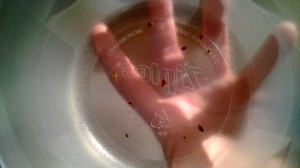A traveler returned home bed bugss can hide in luggage and then crawl out when it’s dark and peaceful begin where luggage was placed upon returning home.
You may also inadvertently bring bed bugs into your home on infested bedding or furniture. If you purchase second-hand furniture, especially beds or mattresses, thoroughly inspect the item before bringing it into your home. If you remove infested mattresses or furniture from your home, don’t leave them on the curb or porch. Take such items immediately to the dump or clearly mark them as infested by bed bugs so others won’t unknowingly bring the items into their homes.

Bed bugs do not simply wander in from the outside; instead they have to be transferred from one infested environment to another. Because of this, bed bugs have evolved into masters of hitchhiking. It is very unlikely that you have a problem with bed bugs if you have not picked up an item that is infested, stayed in an infested environment or had someone visit you that has been in an infested environment.
One proactive step a manager can take is to regularly replace beds, mattress, and bedding materials. Frequently laundering bedding and placing potentially infested items into walk-in freezers or heat units during tenant turnover can help prevent the spread and establishment of bed bugs. Keep clutter down, so it is easier to inspect and so bed bugs have fewer hiding places. Also, seal up cracks, crevices, and holes in bedding, furniture, and other potential hiding sites. It is much easier to manage a bed bug infestation when the population is small.Managers of hotels, furnished apartments, dormitories, homeless shelters, and other facilities that house transient populations need to train staff to recognize signs of bed bug activity and take action as soon as they find an infestation